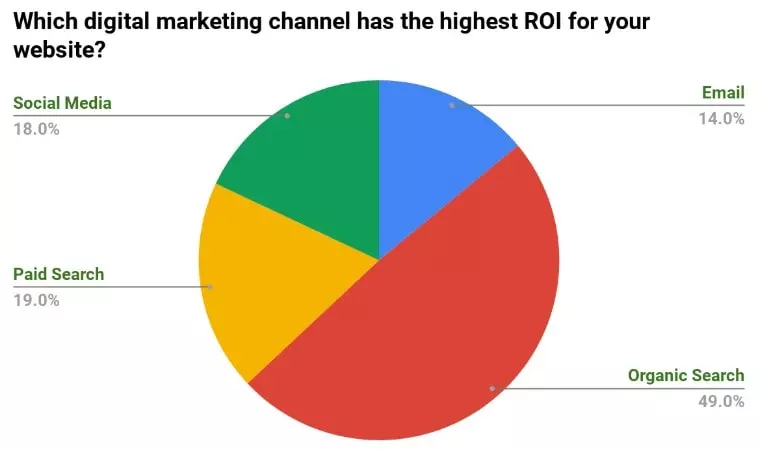In a recent survey, UPS was highlighted for its positive impact on communities, thanks to its strong presence and efforts to stay visible and trusted.
Now, when it comes to making a business recognizable and building trust, there are many ways to create a strong brand.
While every channel contributes, SEO stands out as the foundation of effective branding.
As an SEO Specialist, I want to discuss the connection between SEO and branding. At first glance, they might seem like two different things, but they’re deeply connected. Let’s break it down and see how they work together.
What is Branding?

At what point can you confidently call a business or a person a brand? There is a lengthy and common branding signs checklist that you can find anywhere, from ChatGPT to any YouTube video.
If you truly want to know whether your business has become a brand or not then you can evaluate it using the following unique factors I have found.
- People feel proud when they use your products or services.
- The ultimate level of branding is when even celebrities feel satisfied and proud to experience what you offer.
- A brand creates an ecosystem and provides a consistent experience across all locations and branches.
- A brand ensures the same quality, taste, or service, no matter where it’s produced, whether in China or America.
There are many more interesting points to consider, but those can be covered in another blog post.
10 Core Channels for Crafting a Powerful Brand Identity
There are about 10 key channels for branding in today’s digital world, which are more than enough to turn anyone or anything into a brand.
Audiences can be categorized into two types: online and offline. I’ve divided the channels into 7 for online branding and 3 for offline branding.
Online Channels for Branding
1. Website

A website is like a permanent home where visitors can always find you. It’s a reliable platform to build trust, especially when it’s designed well and loads quickly.
But what’s the point of having a website if it gets no traffic? Imagine investing in paid ads to bring in visitors.
The traffic flows as long as the ads run, but once you stop, the traffic disappears, leaving your website empty again.
This is where SEO becomes the real game-changer, offering a long-term and sustainable way to bring consistent traffic to your site.
2. Social Media Platforms

Many businesses rely on social media to attract organic and loyal audiences, successfully building their brand. However, when it comes to converting those followers into customers, challenges arise.
Some potential customers prefer to visit a business’s website first to check its credibility, learn more about its services, and assess its quality before making a decision.
If your website is hard to find on search engines due to poor SEO, you risk losing those conversions. Additionally, social media platforms are not fully within your control.
Violating their terms and conditions, even unintentionally, can result in your account being suspended or banned, causing you to lose your audience and brand reputation.
This makes having a strong, visible website an essential part of building trust and securing conversions.
3. Email Marketing

Email marketing leans more towards direct marketing than branding. It gives you full control since it’s a one-on-one communication method, free from external restrictions or platform limitations.
However, without an SEO-optimized website, it can be challenging to keep your audience engaged, present product or service information effectively, and build trust with your audience.
4. Content Marketing (Blogs, Videos, Podcasts)

If you’re relying on others to feature your products or services on their platform, you’re giving them control over how your brand is presented.
They can remove your content at any time or portray it in a way that may not align with your vision.
Writing about your products or services on your own website, optimized with SEO strategies, allows you to maintain control over your brand’s narrative.
This way, you provide accurate and positive information to your audience before anyone else has the chance to present it differently.
5. Search Engine Optimization (SEO)

Search engine optimization is one of the most effective channels for branding because it directly connects to your website and aligns with the long-term nature of branding itself.
For instance, when someone needs a solution or wants to purchase something, they turn to the internet to search for answers.
Whether they’re using Google, ChatGPT, YouTube, or any other platform, search engines play a key role in connecting users to relevant content.
However, if your business doesn’t appear in search results for keywords related to your services or products, all your efforts may fall short.
A study by Ashley Rodriguez highlights that 40% of revenue often comes from organic traffic, emphasizing the significance of being easily discoverable through search engines.
7. Paid Advertising (Social Ads, SEM & Influencer Marketing)
Again! When you rely on paid advertisements to market your product or service, you may see results during the campaign, but those results stop as soon as the campaign ends.
Offline Channels for Branding
Offline branding channels have the power to stand on their own and connect deeply with audiences.
When someone sees a banner or steps into an office with a consistent theme and cohesive environment, it naturally builds trust.
Humans are wired to feel more confident and assured when they can physically see and experience something, making offline branding a powerful way to establish authenticity and reliability.
1. Events Exhibition and Webinars

Events, exhibitions, and webinars are excellent ways to connect with offline audiences. They offer a personal approach to presenting products or services, creating meaningful connections and lasting impressions. These interactions build trust and recognition, helping businesses establish a strong presence.
2. Offline Paid Marketing (Billboards, Print Media)

Offline paid marketing, such as billboards and print media, is an effective way to build brand visibility among offline audiences. It captures attention quickly and leaves a lasting impression.
For individuals who spend less time online, consistent messaging and presence in offline channels can create strong awareness and loyalty.
3. Word of Mouth

Word of mouth is a powerful tool for building a brand, especially when connecting with offline audiences. When people share positive experiences, it naturally builds trust and strengthens your reputation.
Personal recommendations are often enough, as they feel authentic and create a strong bond without the need for flashy marketing campaigns.
Why SEO Is The Foundation: Connection Between Seo And Branding

A recent study shows that 49% of marketers believe SEO delivers a better return on investment compared to other marketing strategies.
This makes the website, with solid SEO, the most reliable channel for long-term success. The key is that all other marketing channels rely on your website, while the website itself depends on SEO.
Without traffic, even the most well-established website loses its value. You might wonder about SEM (Search Engine Marketing), which also aims to get rankings on search engine results pages.
However, users are becoming increasingly savvy, easily identifying ads from organic listings. Plus, once you stop spending on ads, your rankings and visibility drop, along with your brand recognition.
Despite these clear advantages, many small digital marketers still ignore SEO. For more on why that happens, check out my post on “Why Small Digital Marketers Ignore SEO.“
Final Thoughts – Wahaj Ansari
To build a strong brand, start with an online presence and focus on your website with SEO as your primary channel.
Digital branding will help you reach both online and offline audiences, as there is a group of people who engage with both digital and traditional methods.
Once you start generating some revenue, expand into other channels to capture a wider audience and dominate the market by using multiple platforms to target both groups.
Discover more from Wahaj Ansari
Subscribe to get the latest posts sent to your email.


http://Trevis
I am extremely impressed along with your writing talents and also with the format to your weblog. Is this a paid subject matter or did you customize it yourself? Either way stay up the excellent quality writing, it is rare to peer a great blog like this one nowadays!
Thank you so much for the compliment! The content is all created by me not paid or sponsored.